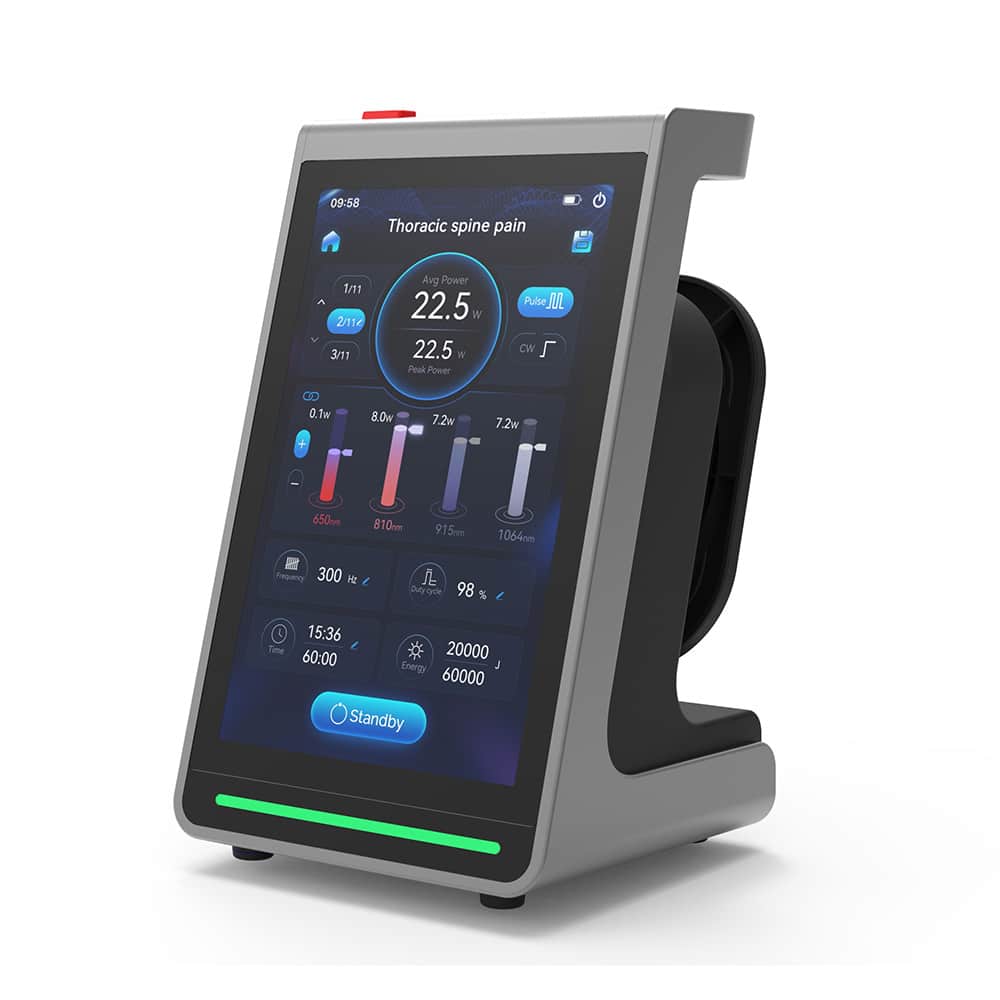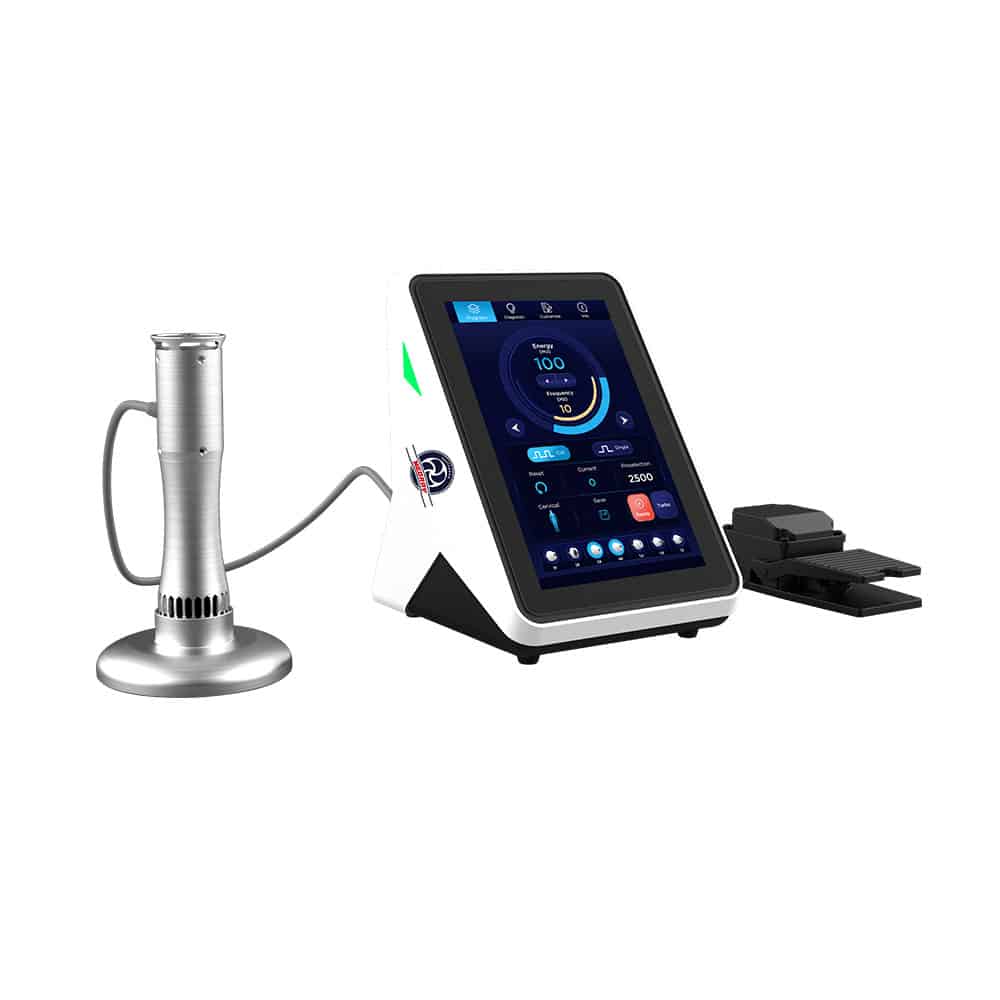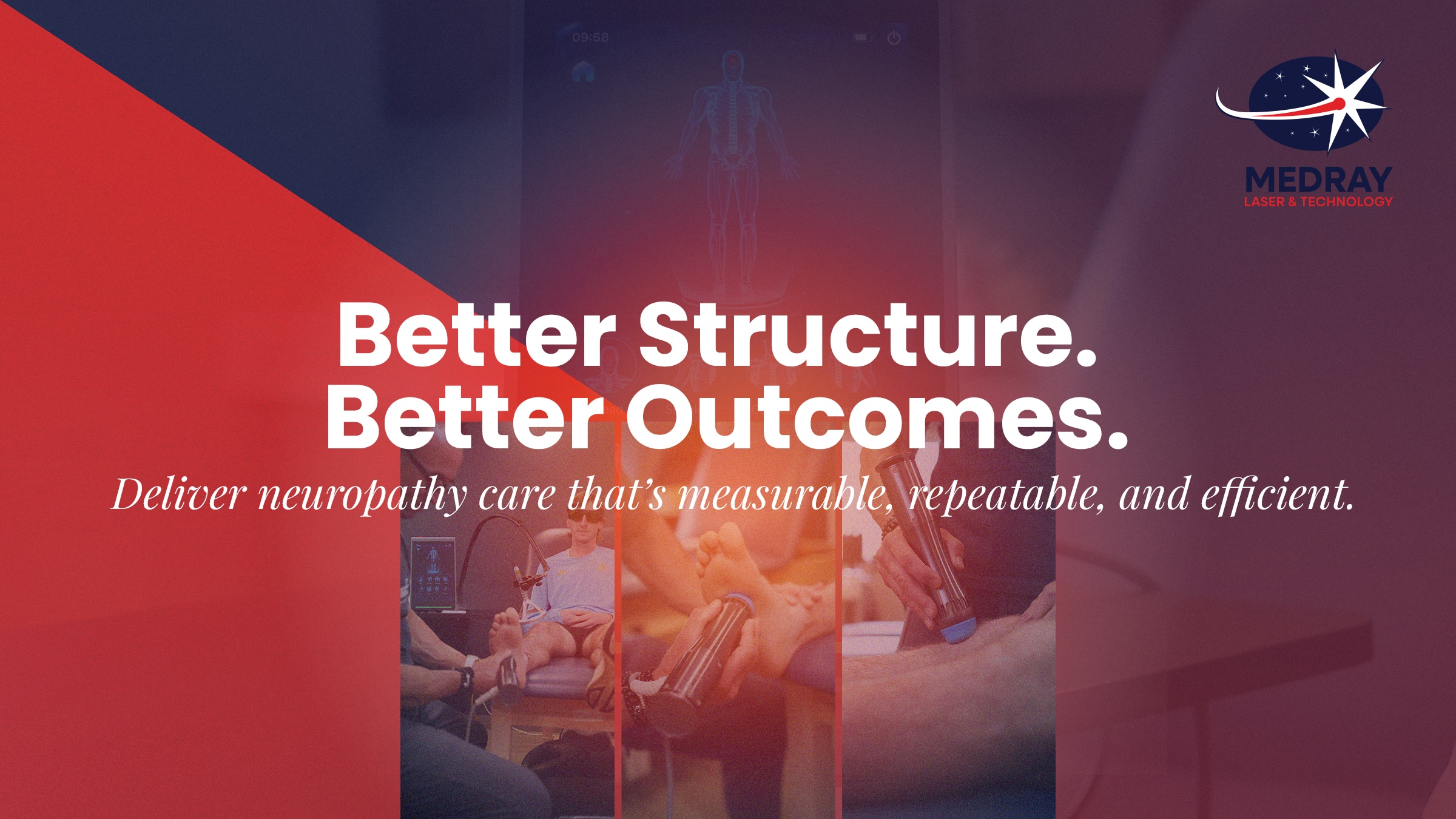What Is Neuropathy-Oriented Care, and Why Does It Matter for Clinics?
Peripheral neuropathy, particularly in the foot and ankle, presents a common and often challenging scenario for clinicians. While many practices focus on mechanical or pain-driven interventions, an emerging model emphasizes structured, measurable visit-level care — one that allows for predictable workflows, objective tracking, and efficient use of technology such as laser therapy and shockwave therapy.
This approach is not about creating a standalone neuropathy program but about integrating neuropathy-oriented logic into routine visits. The aim is to balance scientific rigor with operational efficiency: using standardized measurements, fixed visit windows, and objective data to guide ongoing decisions.
Clinics adopting this structure can both improve patient outcomes (through reproducible, data-driven care) and enhance clinic efficiency (through time-bound, consistent delivery).
What Is the Aim and Scope of a Neuropathy-Oriented Visit?
- Improving walking tolerance
- Reducing nocturnal symptom burden
- Maintaining functional mobility
By explicitly defining the visit aim, providers reinforce clarity between clinician and patient. Next, confirm scope of practice and any device-specific constraints. Every intervention — including the use of therapeutic laser or shockwave — must align with FDA-cleared indications and clinic policy.
The FDA has cleared therapeutic lasers for increasing circulation, stimulating tissue, and relieving pain. When applied within this context, clinicians can utilize these tools safely and consistently while avoiding overreach into unapproved indications.
How Can Clinics Efficiently Screen for Neuropathy in a Routine Visit?
Recommended Screening Tools:
- Semmes–Weinstein Monofilament Test: Use fixed plantar sites, documenting the map and the number of detected points.
- 128 Hz Tuning Fork: Apply at the great toe and record the vibration duration (in seconds).
- Footwear and Orthotic Review: Note the footwear or orthotic devices relevant to the session plan.
How Should Measurement Be Standardized Across Visits?
Commonly Used Measures:
- Monofilament Map: Count of detected sites across a standard plantar grid.
- Vibration Duration: Seconds of perception at the great toe with a 128 Hz tuning fork.
- 10-Meter Walk Speed or 30-Second Sit-to-Stand Test: Indicators of functional mobility.
- Single-Leg Stance Time: A simple balance proxy (if safe to perform).
How Can Laser Therapy Be Incorporated Within the Visit?
Disclaimer:
The FDA has cleared therapeutic lasers for increasing circulation, tissue stimulation, and pain relief. Some of the use cases described in this article reflect how clinicians may apply laser therapy in practice, based on peer-reviewed research. This information is provided for educational purposes only and does not imply FDA clearance or approval for specific conditions.
When Should Shockwave Therapy Be Used in a Neuropathy Context?
How Should Clinicians Re-Test and Document After Each Visit?
- Objective values (e.g., vibration duration, detected sites)
- A short patient descriptor (e.g., “easier first steps,” “no change”)
- Start and stop times
How Does the Pathway Support Progression and Quality Improvement?
- Continue the same parameter set
- Adjust frequency or intensity
- Shift focus toward gait training, footwear optimization, or strength work
During quality improvement (QI) reviews, the clinic can evaluate two key indicators:
- Adherence to delivery window — Did each clinician stay within the structured timeframe?
- Measure impact — Did the chosen outcome measure influence planning for subsequent visits?
Why Does This Pathway Work?
- Measurable outcomes
- Consistent patient experiences
- Efficient use of staff and devices
- A defensible, policy-aligned workflow
Explore our Class 4 Lasers and Shockwave Therapy Device
Laser

Explore Medray’s Class 4 Lasers
Medray’s Class 4 therapeutic lasers are designed to support circulation, tissue stimulation, and pain relief through a streamlined, repeatable workflow. Discover how laser therapy integrates seamlessly into busy clinics while providing a contact-free option for sensitive presentations.
Shockwave

Explore Softshock 2.0 (RPW)
Support for consistent, measurable neuropathy care delivery
Take the Next Step Toward Structured Neuropathy Protocols
Bring clarity and structure to foot and ankle neuropathy care with standardized visit-level workflows. Medray helps clinics integrate laser and shockwave therapy within FDA-cleared parameters—improving circulation, comfort, and documentation consistency.
Call us at (573) 745-1086 or visit our Contact Us page to schedule a neuropathy workflow walkthrough and see how structured, measurable care pathways can elevate your clinic.
Medray Laser & Technology manufactures and distributes FDA-cleared medical devices designed to support circulation, tissue stimulation, and pain relief. Our products are intended for use by licensed healthcare professionals. While clinical research and practitioner experience support the use of laser and radial pressure wave (RPW) therapy in various applications, some uses described in this article may be considered off-label and are not explicitly cleared by the FDA. Patients should consult their healthcare provider to determine the best treatment for their individual needs. The information provided in this article is for educational purposes only and should not be considered medical advice or a substitute for consultation with a licensed medical professional.
Educational content is for licensed healthcare providers and may include discussion of clinical uses not cleared by the FDA. Provided for scientific exchange and not intended as promotional.
The FDA has cleared therapeutic lasers and shockwave devices for increasing circulation, tissue stimulation, and pain relief. Some of the use cases described in this article reflect how clinicians may apply shockwave therapy in practice, based on peer-reviewed research. This information is provided for educational purposes only and does not imply FDA clearance or approval for specific conditions.
